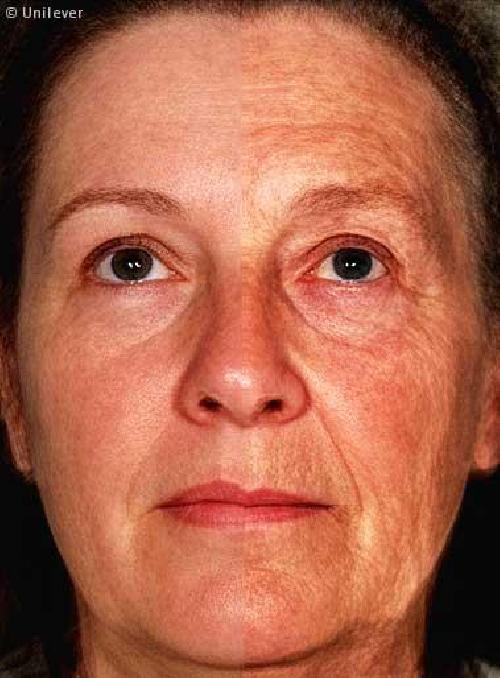Researchers reporting in the Cell Press journal Current Biology on April 28 have found a gene that helps explain why some people appear more youthful than others.
The gene in question, known as MC1R, is already well known for producing red hair and pale skin. Now, it appears that variation in this same gene is also related to differences in how old people look to other people--their perceived age. People carrying particular MC1R variants in their DNA look, on average, almost 2 years older than they are.
"For the first time, a gene has been found that explains in part why some people look older and others younger for their age," says Manfred Kayser of Erasmus MC University Medical Center Rotterdam in the Netherlands.
 The impact of aging on human facial appearance as illustrated by the average face of 12 women aged 47 years (right facial side) and 12 women aged 70 years (left side). Aging effects facial skin such as wrinkling, uneven pigmentation, and facial structure such as lip size, nasolabial fold, with some people looking older, others younger for their age. Credit: Fan Liu
The impact of aging on human facial appearance as illustrated by the average face of 12 women aged 47 years (right facial side) and 12 women aged 70 years (left side). Aging effects facial skin such as wrinkling, uneven pigmentation, and facial structure such as lip size, nasolabial fold, with some people looking older, others younger for their age. Credit: Fan Liu
Earlier studies had shown that a person's perceived age is influenced by a combination of genetic and environmental factors in roughly equal parts. Interestingly, perceived age has also been shown to predict a person's health and mortality, suggesting that the age we perceive a person to be from the appearance of their face might also be related in important ways to a person's biological age and health.
To further investigate in the new study, Kayser and his colleague David Gunn at the UK- and Netherlands-based company Unilever searched the genomes of more than 2,600 elderly Dutch Europeans from the Rotterdam Study for DNA variants associated with differences in perceived facial age and wrinkling as estimated from digital facial images. The strongest hits for perceived facial age were for DNA variants in the MC1R gene. This finding was confirmed in two other large European studies.
As Kayser and Gunn report, individuals carrying particular MC1R variants looked almost 2 years older for their age. The association between these DNA variants and perceived age wasn't influenced by age, sex, skin color, or sun damage.
In addition to its role in skin color, MC1R is also known to play a role in other biological processes, such as inflammation and DNA damage repair. The researchers say the gene's influence on these processes might be the reason it links to youthful looks.
While the researchers note that this gene is just one of many factors that influence perceived age, they plan to continue exploring exactly how it influences our looks and identify other genes that influence perceived age. Ultimately, the researchers think that this line of work can offer important insights into our health and the nature of aging itself.
"We believe that using the perception of age is one of the best and most exciting ways to measure how 'well' people are aging, which we hope will lead to further breakthroughs in aging and health research in the near future," David Gunn says.
source: Cell Press